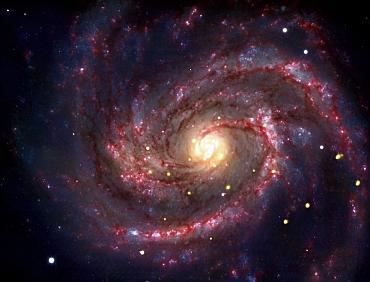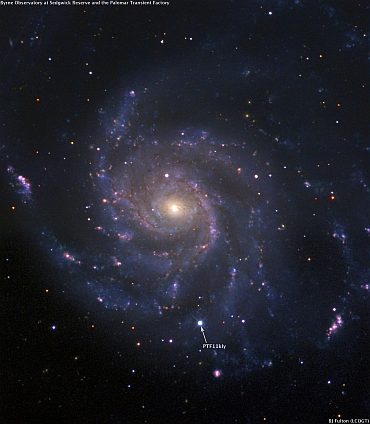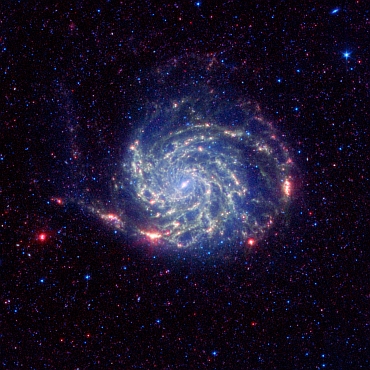This article was first published 14 years ago
Home »
News » SCINTILLATING PIX: Nearest supernova in 40 years
SCINTILLATING PIX: Nearest supernova in 40 years
Last updated on: September 8, 2011 16:52 IST
Image: A supernova within the galaxy M100
Photographs: Reuters
The nearest supernova of its type to be discovered for 40 years is predicted to be at its brightest and will be visible through a good pair of binoculars across Britain this week. The supernova, which was first spotted on 24 August by scientists from Oxford University and the Palomar Transient Factory collaboration, is in the Pinwheel Galaxy, M101.
Whilst not visible to the naked eye, with a clear sky anyone can observe the supernova using a good pair of binoculars or a small telescope, it was predicted to be at its brightest today, a university release said.
...
Image: The supernova will be visible from UK
Photographs: Reuters
To find M101 look for the formation known as 'The Plough' or 'Big Dipper', trace from the end of the 'handle' of 'The Plough' and find the second star along, Mirza, and M101 lies four degrees to the East. Observers will see a bright star at the edge of one of M101's spiral arms, the release said.
"The best view of this exploding star is likely to be this Wednesday or Thursday. Look for it just after evening twilight near the 'handle' of 'The Plough'," said Dr Mark Sullivan of Oxford University's Department of Physics, who led the Oxford team. "Whilst it looks more or less like just another bright star, unlike its companions this supernova will soon fade away, and after a few days it will only be visible with larger telescopes," he added.
Image: Image of the Pinwheel galaxy from NASA's Spitzer Space Telescope
Photographs: Reuters
The discovery of the supernova is particularly important because it is a type 1a supernova, the kind used by scientists to measure the expansion of the Universe. "For many people it could be a once in a lifetime chance to see a supernova of this kind blossom and then fade before their eyes; we may not see another one like it for another forty, or perhaps over a hundred, years," Sullivan said.
The Oxford University-PTF team are using the Hubble Space Telescope to observe the supernova. These observations began about five days after the explosion and will continue into mid-October, including investigating the supernova's ultraviolet properties which cannot be studied from the ground.
Source:
PTI© Copyright 2025 PTI. All rights reserved. Republication or redistribution of PTI content, including by framing or similar means, is expressly prohibited without the prior written consent.


